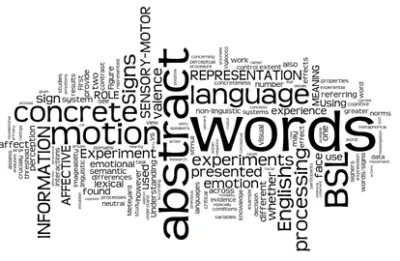Our Research
We conduct cognitive neuroscience research in a number of areas, including language comprehension, visual perception, and brain-computer interfaces. Electrophysiology is particularly useful for investigating theoretical questions within these domains since it provides high temporal resolution and the ability to detect qualitative differences in effects elicited by different types of cognitive processing. Results from our studies help shed light on the neurobiological mechanisms underlying these processes, as well as the time-course of their operation.
Language Comprehension

Humans swim in language like fish swim in water. Consequently, producing and comprehending language usually seems quite effortless to us. However, the underlying neural and cognitive mechanisms are actually extremely complex. We investigate how the brain accomplishes many of the complex tasks involved in language comprehension, including recognizing individual words (lexical access) and combining their meanings (lexical semantics) into larger, complex representations, such as phrases, sentences, and discourse-level representations (compositional semantics). We also explore the relationships between such representations and context they are embedded within (pragmatics). The lab's current experiments include studies of metaphorical language, pragmatic inferencing, the effects of discourse context, and the syntax/semantics interface.
Visual Perception
Much of our impressions of the world around us are based on sensory information provided by the visual system. However, visual information can occasionally mislead us into seeing effects which are not really present, like the white triangle in the center of Figure 1. Conversely, our expectations can lead us to interpret the same visual information in different ways. For example, if you are expecting to see a vase, you might not notice the faces in Figure 2, or vice versa. We investigate the neurophysiological underpinnings of the interaction between visual perception and higher-level cognitive systems, including the perception of optic flow fields, the perception of slope angles, and the neural correlates of visual consciousness.


Figure 1. Kaniza triangle Figure 2. Figure-ground
Brain-Computer Interface (BCI)

EEG methods can be combined with BCI technology to allow people to control computers using only their brainwaves. BCI systems translate the brain activity associated with certain kinds of thoughts into specific actions, like moving a cursor on a computer screen, by detecting certain features in the EEG activity. Successful BCI operation requires that the user and the BCI system continually adapt to each other to ensure stable performance. In our lab, we combine BCI with virtual reality environments to investigate how this brain-to-machine adaptation occurs and what its effects on other cognitive functions may be.



